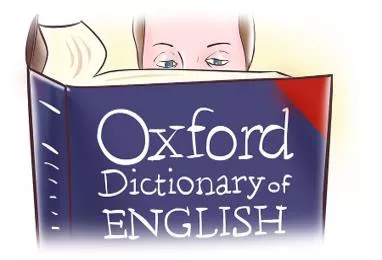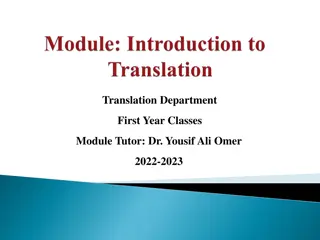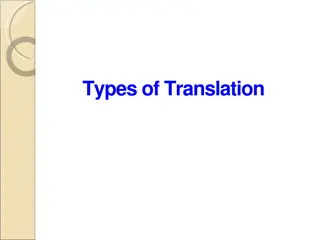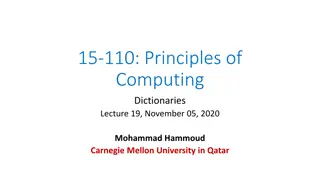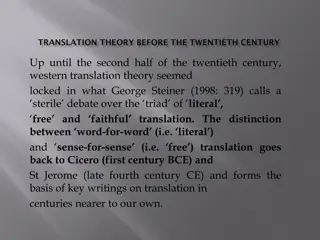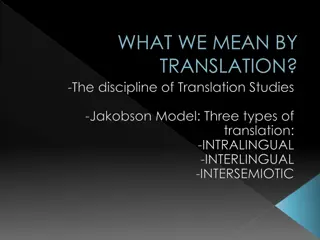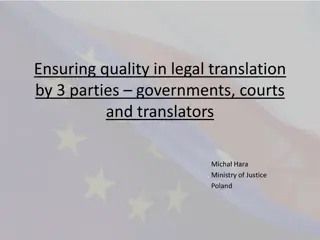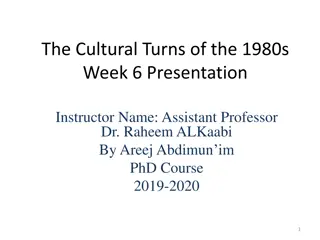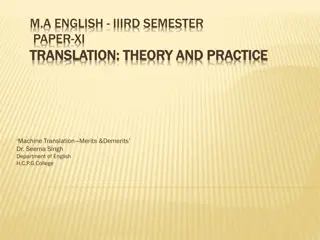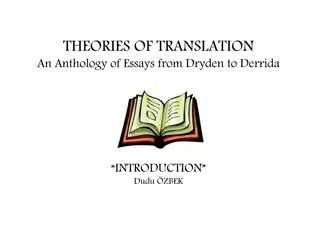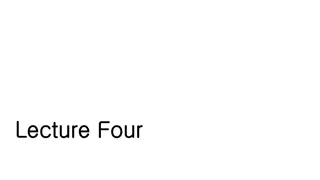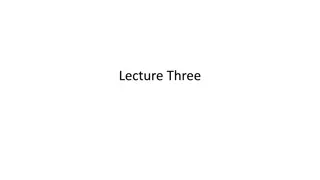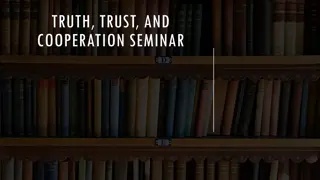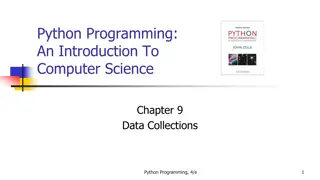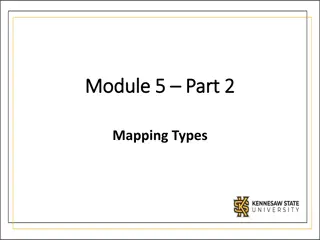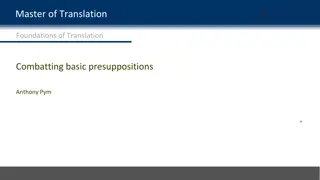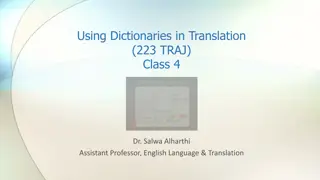Using Dictionaries in Translation (223 TRAJ)
This insightful guide delves into the significance of using dictionaries in translation work. It covers practical tips and strategies to enhance translation accuracy and efficiency. Explore the benefits of leveraging dictionaries in the translation process and how they can help overcome language barriers. Whether you are a beginner or a seasoned translator, this guide will provide valuable insights to improve your translation skills.
Download Presentation

Please find below an Image/Link to download the presentation.
The content on the website is provided AS IS for your information and personal use only. It may not be sold, licensed, or shared on other websites without obtaining consent from the author. Download presentation by click this link. If you encounter any issues during the download, it is possible that the publisher has removed the file from their server.
E N D
Presentation Transcript
Using Dictionaries in Translation (223 TRAJ) .
Course Requirements - Attend at least 75% of the lectures - Take notes - Study regularly; be ready to answer the instructor s questions about the previous lectures - Attend exams. Make-up exams are given only to students with VALID medical reports
Objectives By the end of this course, students are expected to learn about different types of general and specialized dictionaries; and to know how to locate key components of word entries and use them in translation. The course tackles grammatical, morphological, phonetic and semantic issues in bilingual dictionaries.
Course Description The course acquaints the students with different types of specialized and general dictionaries and the characteristics of each. Students are trained to skillfully use the dictionary (such as selecting the right type), and gaining speed in looking up words.
Learning outcomes After studying this course, the student is expected to be able to: Use various types of dictionaries effectively Overcome different issues while using dictionaries
Textbook adopted and supporting references Title of the book Author's name Publisher's name Date of publication A Handbook of Lexicography: the Theory and Practice of Dictionary-Making Svenson Bo Cambridge University Press 2009
Lexicography Lexicon has two different meanings: 1. All the vocabulary of a language 2. The dictionary The English suffix - graphy means: 1. "writing" or 2. a "field of study"
Lexicography is used in two different senses: Practical lexicography is the art or craft of writing dictionaries. 1. Theoretical lexicography is the theory or scholarly discipline of analyzing and 2. describing dictionaries. The term lexicology is variously used. Some use it as a synonym for theoretical lexicography, others use it for a branch of linguistics pertaining to the treasure of words in a particular language i.e. the study of forms, meanings and behaviors of words.
What is a dictionary? A dictionary is: a list of words with their definitions, a list of characters with their glyphs or a list of words with corresponding words in other languages. a reference book containing words, usually alphabetically arranged along with information about their forms, pronunciations, functions, and meanings. a reference book listing terms or names important to a particular subject along with a discussion of their meanings. A sample sentence, pronunciation information, word derivations, histories, or etymologies, illustrations, usage guidance are often included.
Example: Character Different glyphs
Fundamental questions for lexicographers: Users who will use the dictionary? Uses what will the dictionary be used for? 1. 2. Answers to these questions will inform design and publication decisions for dictionary maker, e.g. monolingual vs. bilingual, encyclopedic vs. compact, symmetrical vs. asymmetrical bilingual, general purpose vs. specialist etc.
Thestructure of a dictionary: 1. macrostructure overall structural organization of volume, typically: front matter, introduction, user guidelines; (before the A letter) body entries and definitions (plus often other stuff), typically organized alphabetically; (from A-z) end matter appendices and additional information, e.g. personal names, place names, loan items etc. (after the z)
Thestructure of a dictionary: 2. microstructure internal structure of dictionary entry blocks, typically: Headword- the word you are looking up. It is always in bold type. Entry- the information on the word you are looking up. Pronunciation- tells you how to say the word. Found in (parentheses).
Stress: stress is very important, because it is hard to understand a word pronounced with the wrong stress. Part of speech- tells you how the word is used in a sentence (n=noun, v=verb, adj=adjective, adv=adverb). British and American vocabulary or pronunciation: the British word (labelled BrE) and the American (labelled NAmE or (US to distinguish between American and Canadian words).
Spelling Semantic specification Synonyms and opposites: some dictionary entries also provide a list of synonyms (syn), words with similar meanings; and opposite meanings (opp).
Cross-references: to related items: some dictionary entries contain cross-references. Within the entry, you will find the word see, compare, or var of that directs you to another dictionary entry which will give you more information about the word you first looked up. Collocations, co-occurrence strings: certain words are typically used with other words. For example, we say a tall tree but a high mountain . These words are called collocates. Register: the dictionary contains a number of labels which tell you about how formal a word is, and in what situations you can use it. Here are some of these words: technical informal disapproving ironic formal taboo Usage with examples Etymological: this tells you the history of the word, and what language it came from.
Nature of Headwords What is the difference between a word and a lexeme: Chair, table, book and paper are words Lexeme is an abstract concept it is the set of word forms that comprise a paradigm of related words forms, eg. sing sings singing - sang sung (cf. talk talks talking talked talked) regular and irregular paradigms; a lexeme can have many different forms. wants, wanting and wanted are different forms of the same lexeme want 1. Orthographic word (relating to spelling) written word surrounded by spaces; but what about compounds, hyphenated forms etc. 2. Phonological word sequence of sounds that forms phonological unit (determined by rules of syllable structure, stress, etc)
Entry order Dictionaries of alphabetic languages list words in alphabetical order. With non-alphabetic languages, it may be different. The order in a dictionary with ideographic entries i.e. graphic symbols that represent an idea rather than a group of letters; such as Chinese character is often troublesome and controversial because each character has different readings.
Activity Choose a word to look up in the dictionary. Write that word and dictionary entry on a piece of white paper. Label the parts of the entry.
References Oxford dictionary skills training programme: https://static.cornelsen.de/bgd/97/83/06/09/47/89/8/9783060947898_x1SE_1C_Inhalt_g esamt.pdf
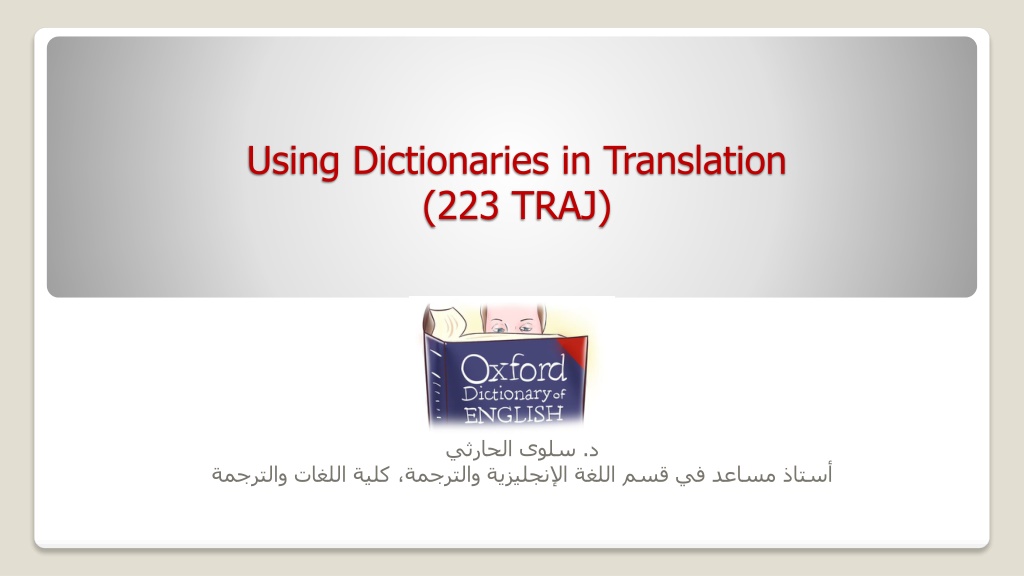
 undefined
undefined

